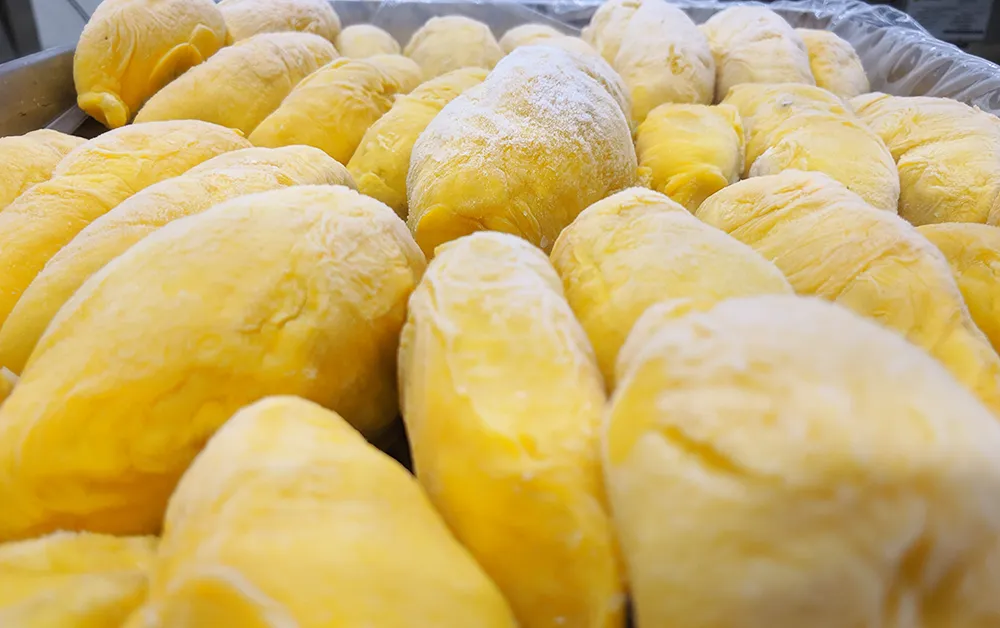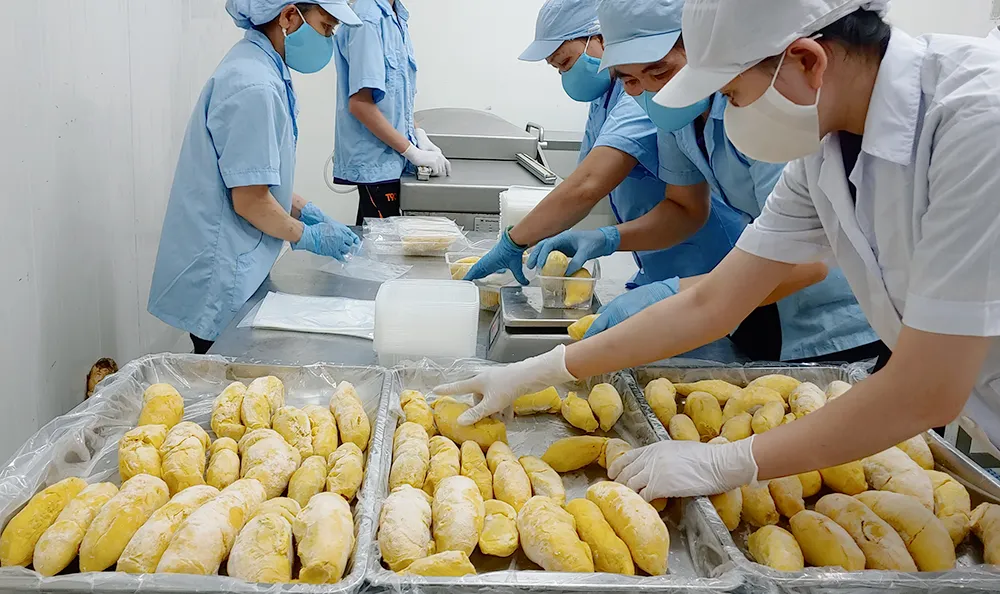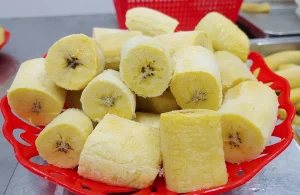
Frozen Durian: A New Driving Force for Fruit Exports in the Coming Years (2025)
Frozen durian is emerging as a new driving force for Vietnam’s fruit exports. To fully unlock its potential in international markets, businesses must comply with the regulations of importing countries.
Table of Contents
Ambitious Goals: $3.2 Billion Durian Export Revenue in 2024
According to a report from the Ministry of Agriculture and Rural Development, Vietnam’s durian production reached 984,800 tons by the end of September this year, marking a significant 16.6% increase compared to the same period last year.
October marks the start of the durian harvest season in major growing areas such as Gia Lai and Lam Dong. In addition, off-season durian crops in the Mekong Delta provinces will be harvested towards the end of the year, with Vietnam’s total durian production expected to exceed 1.2 million tons in 2024.
While meeting domestic consumption needs, a significant volume of durian is being exported to key markets like China, Thailand, and others. Preliminary data from the Vietnam Fruit and Vegetable Association indicates that durian export turnover reached a historic high of $2.5 billion in the first nine months of 2024. Of this, approximately $2.3 billion came from exports to China.
The association predicts that by the end of October, durian export revenue will surpass $3 billion. This figure is expected to account for 50% of the total revenue for the fruit and vegetable sector, which is projected to hit $6.4 billion by year-end. Looking ahead, the durian export target for 2024 is set at $3.2 billion.
Frozen Durian: A New Opportunity for Export Growth
In addition to fresh durian, the signing of the export protocol for frozen durian between Vietnam and China on August 19, 2024, has opened up new opportunities for Vietnamese durian in the global market.
According to the Plant Protection Department under the Ministry of Agriculture and Rural Development, importing countries often impose specific requirements different from domestic consumption standards.
China, for instance, categorizes fresh and frozen durian into two separate product groups. Fresh durian is managed as fresh fruit, requiring traceable plantation codes, packaging facilities, and compliance with the fresh durian export protocol. Strict monitoring of pests from planting areas to packing facilities is mandatory.
In contrast, frozen durian is classified as food and is subject to different regulations under China’s Order 248 on foreign food facility registration and Order 249 on food safety management measures. These orders require registration of packaging and food production facilities abroad, marking a distinct approach compared to fresh durian management.
To export frozen durian to China, businesses must meet technical requirements. According to Nguyen Quang Hieu, Deputy Director of the Plant Protection Department, frozen durian must be flash-frozen at -35°C for at least one hour, followed by storage and transport at -18°C. These are feasible standards for Vietnamese enterprises, and investment in advanced technology is encouraged to enhance product quality.

Frozen Durian’s Role in the Durian Export Industry
Vietnam’s durian export industry achieved impressive growth in 2023, just a year after entering the export market in 2022. Fresh durian alone contributed 40% of the export value for the fruit and vegetable sector. In 2024, fresh durian exports are projected to exceed $3 billion.
However, not all fresh durians meet export standards, necessitating processing into frozen durian or other forms. Frozen durian plays a vital complementary role in Vietnam’s durian industry. To capitalize on this, Vietnam has negotiated frozen durian export agreements with China.
According to Nguyen Quang Hieu, frozen durian offers unique advantages: fresh durian consists of only 30% edible pulp, with 70% being seeds and peel, which contribute to environmental pollution. Frozen durian, with its longer shelf life, is a more practical option for consumers and can also be used as an ingredient in other products.
Ensuring Compliance for Sustainable Growth
Mr. Hieu emphasizes that to maintain and expand frozen fruit export markets, packaging facilities, farming areas, and businesses must fully understand and adhere to import regulations. Each importing country has its specific requirements for different products.
“Failure to comply due to lack of awareness can result in non-compliance notifications from importing countries. This could lead to stricter measures, directly increasing production costs for businesses. Violations may result in additional sanctions for enterprises, farming areas, or packaging facilities, which could hurt the competitiveness of Vietnamese products,” he stressed.
Frozen durian is well-positioned to become a critical driver of Vietnam’s fruit export industry, provided businesses align with global standards and seize this growing market opportunity.


No Comments